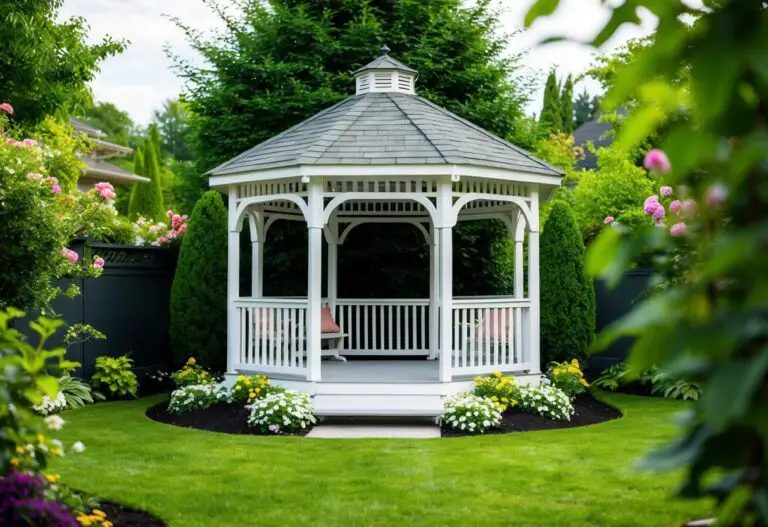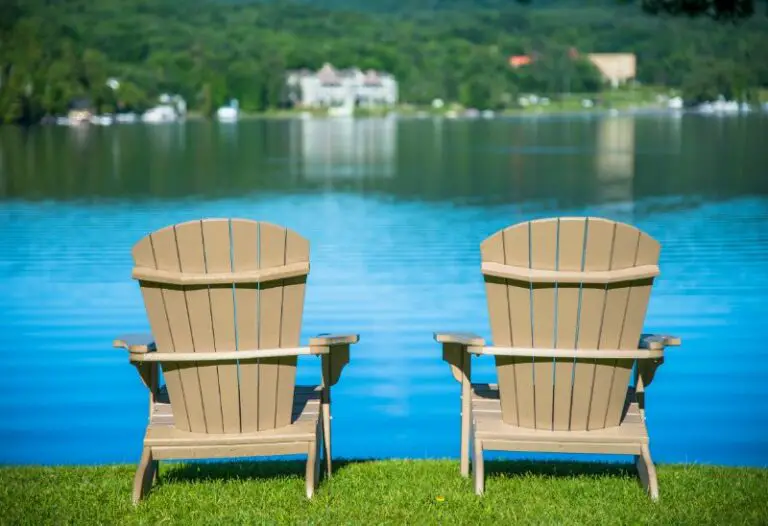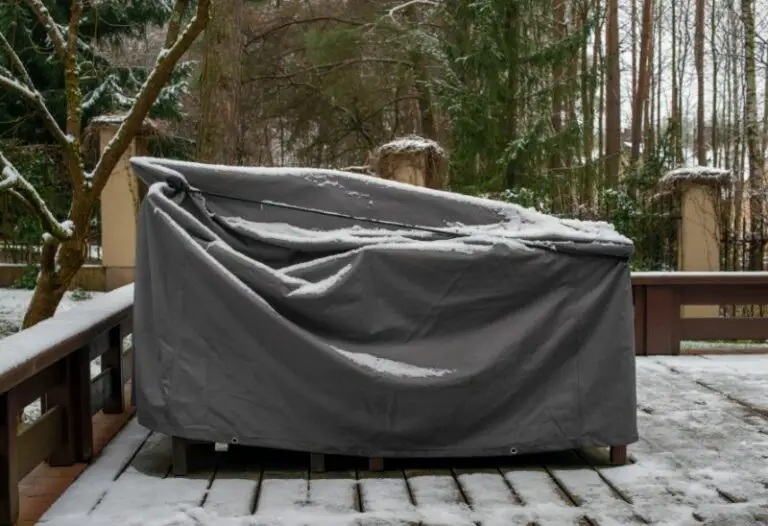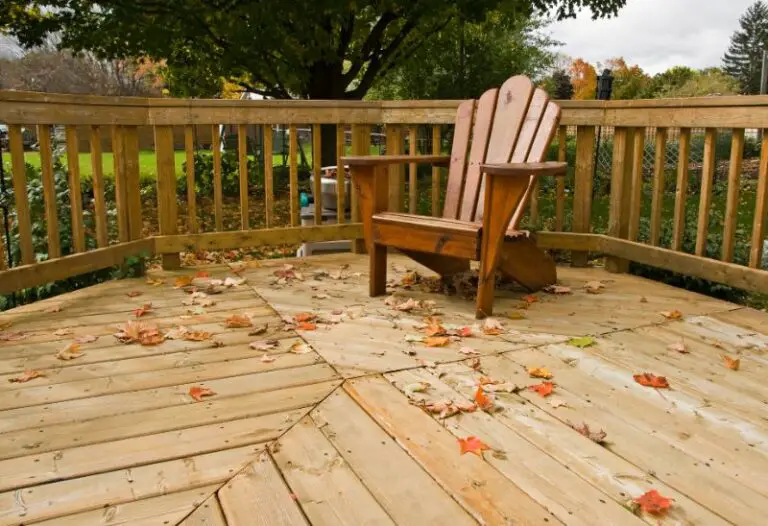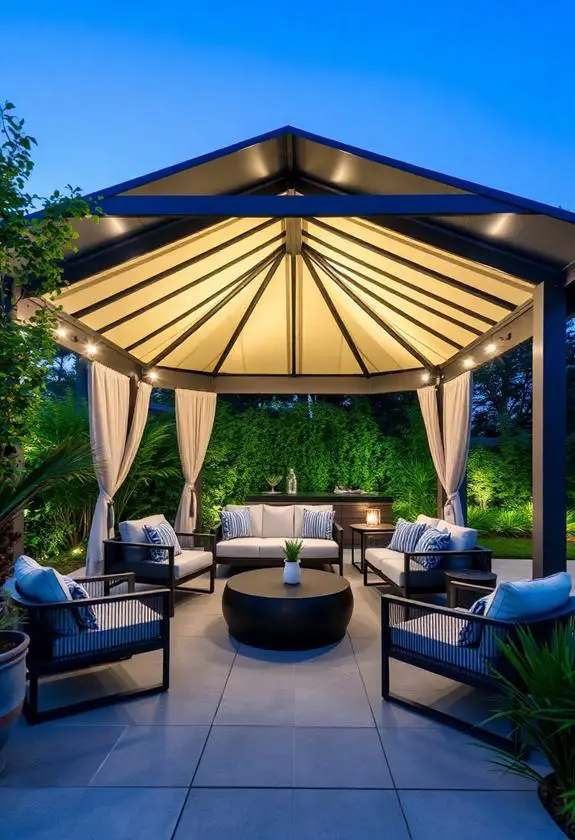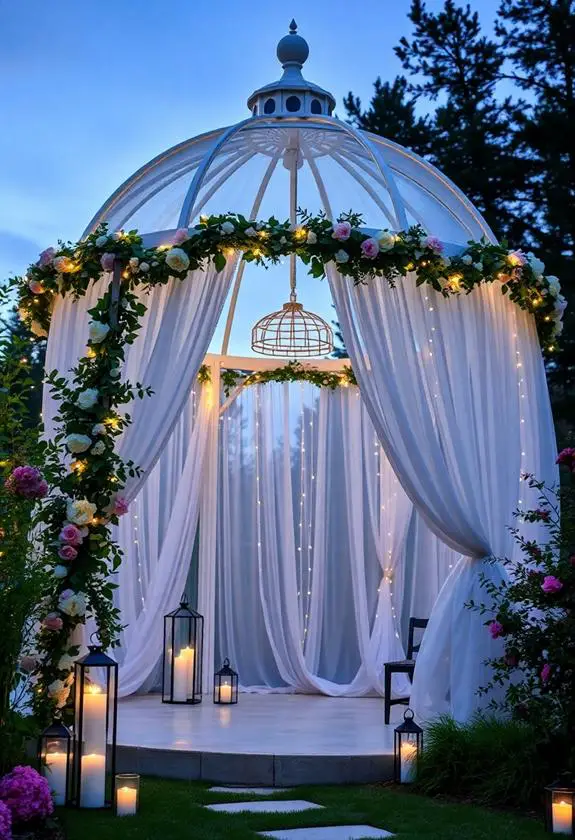Many people may wonder why pergolas are not typically covered with a solid roof like other outdoor structures such as gazebos or pavilions. The answer lies in the design and purpose of pergolas.
Pergolas were originally created in ancient times as an architectural feature in gardens and public spaces. They were often adorned with climbing plants, creating a natural canopy of foliage for shade.
Today, modern pergolas still incorporate this same design concept open slats on top allow sunlight to filter through while providing protection from direct heat and glare.
In this article, we will explore the benefits of uncovered pergolas and why they continue to be a popular choice among homeowners looking to enhance their outdoor living space.
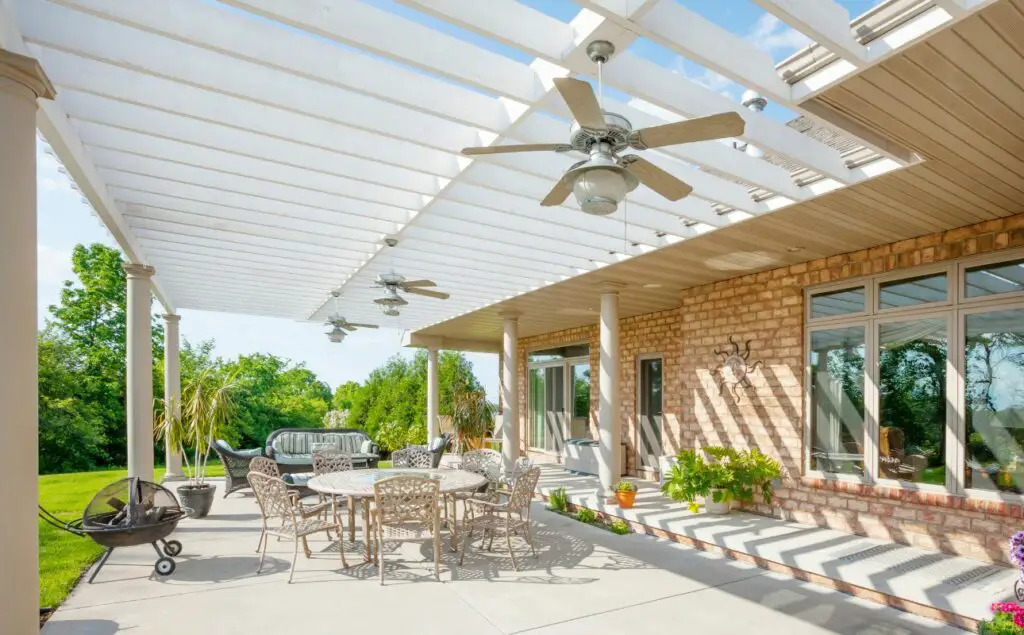
The Benefits Of Open-Top Structures
One reason for leaving pergolas open-topped is their design flexibility. Without a roof or solid covering, they can be customized in countless ways to suit different styles and preferences.
Some may prefer to add climbing plants or hanging lanterns, while others might want to leave it as a simple wooden frame.
The lack of coverage also allows for more natural light to filter through, creating a warm and inviting atmosphere that feels like an extension of nature itself.
Another consideration when choosing an open-top structure like a pergola is the weather. In areas with heavy snowfall or rainfall, having a solid cover could lead to damage from excess weight or trapped water two things that are avoided by keeping the top open.
Without walls or barriers around the perimeter, ventilation is improved which means better air circulation during hot days.
Design flexibility and weather considerations make them a popular choice among homeowners who value both style and practicality in their outdoor living spaces.
Incorporating Climbing Plants For Natural Canopy
Customizing your pergola is an excellent way to create a relaxing outdoor space. However, if you’re looking for additional shade and natural beauty, incorporating climbing plants can be the perfect solution.
Climbing plant options are vast, with some popular choices being clematis, jasmine, wisteria, and grapevines. These plants not only provide a beautiful canopy but also add fragrance to your pergola’s surroundings.
Maintenance tips include ensuring that these plants receive regular watering and trimming them regularly to prevent overgrowth. You may also consider using trellises or other support structures for better growth control.
With proper care and maintenance, climbing plants can transform your pergola into an enchanting oasis of relaxation and tranquillity!
How To Choose The Right Style And Material For Your Pergola?
Pergolas come in many different styles such as modern, rustic or traditional. It’s essential to find a design that matches your outdoor space while still reflecting your personal taste.
Another critical factor is material durability. Pergolas can be made from various materials like wood, vinyl, aluminum, and steel.
Each option has its advantages and disadvantages based on durability, maintenance requirements, cost-effectiveness, etc. To help you determine which one works best for you, here are the sub-lists:
- Wood: The classic choice with the natural appeal but requires regular upkeep.
- Cedar: Resistant to decay and insects making it durable even without chemical treatment
- Redwood: Known for its beauty; resistant to warping and shrinking.
- Pressure-treated pine: Affordable yet susceptible to rotting over time
- Vinyl: Low-maintenance but lacks authenticity compared with real timber.
- PVC-coated vinyl: Durable against weather damage and fading
- Polyethylene-based composite (WPC): More eco-friendly than other plastics; resistant to staining
- Fibreglass reinforced polymer (FRP): Stronger than most plastic options; UV-resistant
- Metal: Sturdy construction with minimal maintenance required but may not blend well depending on your landscape aesthetics.
- Aluminum: Lightweight and rust-free; easy assembly process
- Steel: Heavier-duty metal available in a variety of finishes; potential rust issues if unprotected
Maximizing Your Outdoor Space With An Uncovered Pergola
An uncovered pergola is a great addition to any outdoor design, offering both functionality and beauty.
While many homeowners may wonder why their pergolas are not covered, the truth is that an open structure can provide just as much shade and comfort with the right accessories.
One of the best ways to maximize your outdoor space with an uncovered pergola is by exploring various shade options. Options include adding climbing plants or vines that will eventually cover the top of the pergola.
Another option would be installing retractable awnings or drapes over specific areas of the structure.
These solutions offer flexibility in terms of how much sunlight you want to let into your space while still providing necessary shade during hot summer days.
With these simple additions, you can turn your pergola into a comfortable retreat for relaxation or entertainment regardless of the season or weather conditions.
Importance Of Proper Maintenance For Longevity
While it may seem counterintuitive to leave a structure exposed to the elements, regular upkeep is key when it comes to maintaining the longevity of your pergola.
Proper maintenance will ensure that your pergola remains strong and sturdy against harsh weather conditions such as wind, rain, snow or hail.
It’s important to keep in mind that even though they’re not covered, there are still ways you can protect your pergola from damage caused by exposure to inclement weather.
- One way to protect your pergola from harsh weather conditions is by applying a protective coating on its surface.
- Another method would be adding vines or plants around the structure which can act as additional protection against extreme temperatures.
- Lastly, investing in high-quality materials during construction ensures that your pergola has better resistance against wear and tear over time.
Taking these measures into consideration will help you maintain the beauty and functionality of your uncovered pergola for years to come. Remember, regular upkeep goes a long way in protecting any outdoor structure from environmental damage!
The Bottom Line
Overall, pergolas are a great addition to any outdoor space. They provide shade and create a beautiful aesthetic. While some may wonder why they aren’t typically covered, it’s important to consider the purpose of a pergola to offer partial coverage while still allowing for sunlight and airflow.
There are many different types of pergolas available in the market, each with its own unique features and designs. From freestanding structures to attached ones that can be integrated into a home’s architecture, there is something for everyone.
So if you’re looking to add some style and functionality to your backyard or patio area, consider installing a pergola today!
FAQ
What Are The Different Types Of Pergolas Available In The Market?
There are various types of pergolas available in the market, with a wide range of materials used for their construction and design options.
Some popular materials include wood, vinyl, fiberglass, metal, and aluminum. Each material has its own unique set of advantages and disadvantages when it comes to durability, maintenance requirements, and aesthetic appeal.
Can A Pergola Be Converted Into A Fully Covered Structure?
While pergola design offers an aesthetic appeal and flexibility in terms of customization, it has structural limitations that make it difficult to convert into a completely enclosed area.
The main purpose of a pergola is to provide shade while allowing for ventilation and natural light, which means adding roofing or walls would compromise its open-air design.
What Is The Average Lifespan Of A Pergola?
The average lifespan of a pergola depends on the level of maintenance it receives. With proper care and attention, a well-built pergola can last up to 25 years or more.
Regular upkeep such as cleaning and sealing the wood, checking for structural damage, and ensuring proper drainage can greatly enhance its longevity.
Are There Any Safety Concerns With Having An Uncovered Pergola?
When it comes to having an uncovered pergola, there are some potential safety concerns that homeowners should be aware of.
Without any weather protection, the structure may become damaged over time due to exposure to rain and sun.
Homeowners will need to regularly inspect their pergolas for damage and perform repairs or replacements as necessary in order to ensure that they remain safe and structurally sound.
How Much Does It Cost To Install A Pergola?
On average, homeowners can expect to spend anywhere from $2,000 to $10,000 or more for a professionally installed pergola.
It’s important to consider your budget when planning for this project, as well as any additional costs such as permits or landscaping adjustments.
